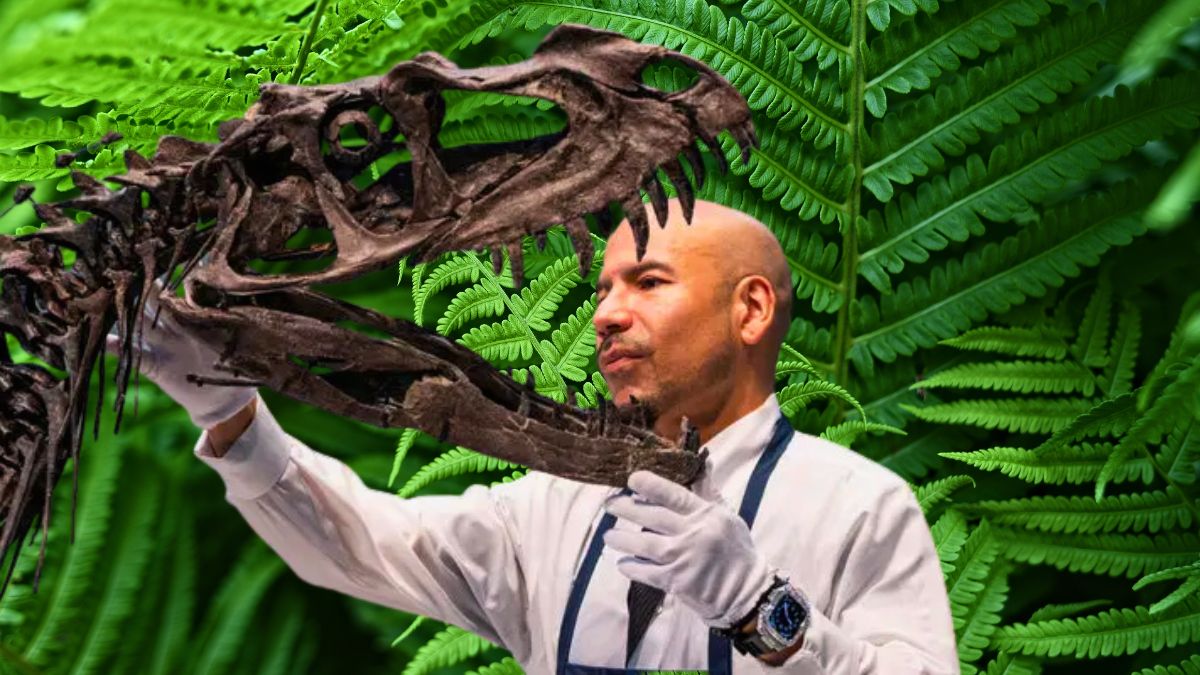🦖A Historic Moment in Fossil Auction History. In a jaw-dropping moment that captivated collectors and scientists alike, a juvenile Ceratosaurus skeleton—believed to be about 150 million years old—was sold for an astonishing $30.5 million at a Sotheby’s auction on July 16, 2025, in New York. The sale took place during Sotheby’s “Geek Week,” an event that also featured rare space rocks, tech memorabilia, and other scientific collectibles.
This wasn’t just any fossil. The specimen is the only known juvenile Ceratosaurus in existence and only the fourth complete skeleton of its kind ever unearthed. Its sale price makes it the third-most expensive dinosaur fossil ever sold, behind the legendary T. rex “Sue” and 2024’s Apex Stegosaurus.
Why This Dinosaur is So Special
Ceratosaurus nasicornis was a fierce predator from the Late Jurassic period, known for its prominent nasal horn, blade-like teeth, and strong limbs. While adult specimens have been discovered before, this particular fossil offered something incredibly rare: a glimpse into dinosaur adolescence.
Key highlights of the specimen include:
🔸 139 original fossilized bones, with
🔸 57 located in the skull alone
🔸 A lifelike mounted posture standing 6 ft 3 in tall and stretching 10 ft 8 in long
🔸 Excavated in 1996 from the Morrison Formation’s Bone Cabin Quarry in Wyoming
🔸 Carefully preserved and restored over several years, with final preparation done by Fossilogic in 2024
This level of preservation and completeness, especially in a juvenile fossil, is almost unheard of—making it a scientific marvel and a collector’s dream.
The Auction: A Six-Minute Bidding War
Originally estimated at $6 million, the auction quickly spiraled into a dramatic showdown between high-profile bidders. In just over six minutes, the bids leapt in half-million to million-dollar increments before finally closing at $26 million, with additional fees bringing the total to $30.5 million.
Though Sotheby’s has not revealed the identity of the buyer, speculation ranges from private collectors and natural history museums to tech billionaires known for acquiring rare scientific artifacts.
Controversy and Ethics: Public Treasure or Private Trophy?
As with most high-profile fossil sales, this auction has ignited ethical debates within the paleontology community. Critics argue that selling such rare fossils to private buyers:
- Limits scientific access
- Reduces opportunities for public display and education
- Risks the fossil being stored away, unseen and unstudied
🗣 “Every fossil that ends up in a private collection is one less piece of the puzzle we can study and learn from,” said Dr. Melanie Archer, a paleontologist at the University of Colorado.
On the flip side, supporters claim that private buyers often loan or donate their acquisitions to museums, and in many cases, preserve them better than public institutions can afford to.
🎙 Sotheby’s spokesperson defended the sale, noting:
“We work with collectors who value science and often partner with institutions to ensure public access.”
Other Auction Highlights: A Martian Meteorite for $5.3 Million
While the Ceratosaurus stole the spotlight, another major headline came from outer space. A 25-kilogram chunk of Mars, known as NWA 16788, was sold for $5.3 million, setting a new record for Martian meteorites.
This iron-rich stone was ejected from the surface of Mars millions of years ago before crashing into Earth. It’s one of the largest confirmed Martian meteorites ever found.
Trends in Fossil Auctions: Dinosaurs Are the New Blue-Chip Assets
The sale is part of a growing trend where rare fossils are becoming high-value collectibles—on par with fine art and luxury real estate. In the last few years:
- The Apex Stegosaurus sold for $44.6 million (2024)
- The T. rex skull “Maximus” sold for $6 million
- “Sue,” the most complete T. rex skeleton, was sold for $8 million in 1997 (now displayed at the Field Museum)
This market shift is fueled by wealthy collectors and investors who see these relics as both cultural status symbols and hedges against economic uncertainty.
What Happens Next?
While the fate of this Ceratosaurus remains uncertain—whether it will be publicly displayed or privately guarded—one thing is clear: it has already made history.
Scientists hope that whoever now owns the fossil will:
✅ Allow access for further research
✅ Publish findings for educational purposes
✅ Possibly loan it to museums or exhibitions
Until then, the scientific community will be watching closely.
Final Thoughts: Between Science and Showbiz
This auction wasn’t just a transaction—it was a symbol of where science, culture, money, and ethics collide. On one hand, it showcased our ongoing fascination with Earth’s ancient past. On the other, it raised difficult questions about who truly owns history—and who gets to benefit from it.
For now, the world’s only juvenile Ceratosaurus is no longer buried in stone—it’s buried in headlines, legacy, and a price tag that reminds us just how much value we place on ancient life.
🔗 Related Links
- 🔗 Sotheby’s Official Lot Page
- 🔗 National Geographic Coverage
- 🔗 Science & Ethics of Fossil Auctions
- 🔗 Habitable Solution – Premium IT & Tech News
Want to stay updated on tech, science, and digital trends?
👉 Follow us on Facebook, TikTok, or visit habitablesolution.com
📩 Have a story tip? Email us at [email protected]


